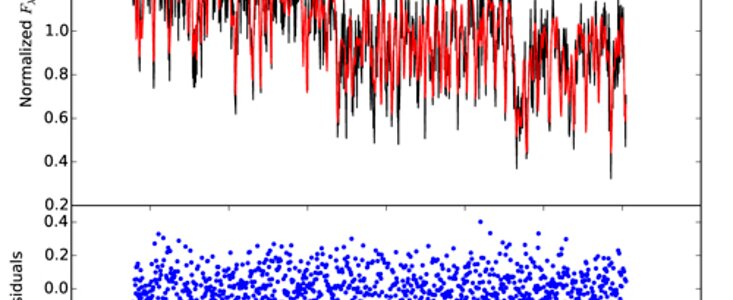Gemini Confirms a Free-Floating Planet
10 Febrero 2016
An extremely red planetary-mass object is confirmed, based on Gemini observations, to be a free-floating member of the Beta Pictoris moving group. This is one of only a handful of directly imaged planets available for spectroscopy – allowing scientists to probe the world’s physical characteristics.
The team, led by K. Allers of Bucknell University (US), used the Gemini Near-InfraRed Spectrograph (GNIRS) on the Gemini North telescope to obtain spectra of the object and determine its radial and rotational velocities. These data provide the key to confirming that PSO J318.5-22 is a member of the Beta Pictoris moving group at the 99.7% level. Estimates of the mass of such objects are extremely sensitive to age, so confirmation of the group membership yields a more reliable mass: 8.3 ± 0.5 times the mass of Jupiter, with an effective temperature of about 1130 K. The Gemini spectra reveal that the body rotates at between 5 - 10.2 hours and its radial velocity (- 6.4 ± 1.7 km/sec) is within the envelope expected for members of the group. As the researchers say, the accurate determination of these physical properties makes PSO J318.5−22 “an important benchmark for studies of young, directly-imaged planets.”
Paper Abstract
PSO J318.5338− 22.8603 is an extremely-red planetary-mass object that has been identified as a candidate member of the β Pictoris moving group based on its spatial position and tangential velocity. We present a high resolution K -band spectrum of PSO J318.5338− 22.8603. Using a forward-modeling Markov Chain Monte Carlo approach, we report the first measurement of the radial velocity and v sin(i) of PSO J318.5−22, −6.0+0.8−1.1 km s-1 and 17.5+2.3−2.8 km s-1 , respectively. We calculate the space velocity and position of PSO J318.5− 22 and confirm that it is a member of the β Pictoris moving group. Adopting an age of 23± 3 Myr for PSO J318.5− 22, we determine a mass of 8.3 ± 0.5 MJup and effective temperature of 1127+24−26 K using evolutionary models. PSO J318.5338−22.8603 is intermediate in mass and temperature to the directly-imaged planets β Pictoris b and 51 Eridani b, making it an important benchmark object in the sequence of planetary-mass members of the β Pictoris moving group. Combining our v sin(i ) measurement with recent photometric variability data, we constrain the inclination of PSO J318.5−22 to > 29o and its rotational period to 5–10.2 hours. The equatorial velocity of PSO J318.5−22 indicates that its rotation is consistent with an extrapolation of the velocity-mass relationship for solar system planets.
Enlaces
- The observations were part of a Director’s Discretionary time program and the paper will be published in The Astrophysical Journal. The preprint is available on arXiv.org.


